Raspberries are delicious and useful berry. Therefore, I often grow it in gardens. However, in order to get good harvest, here you need to know how to care for raspberry bushes. And most important point care will be the trimming procedure. This article will tell you when to prune raspberries and how best to carry out this important procedure.
Raspberry is an unusual shrub that produces aromatic and delicious berries with healing properties. This bush has one feature - in the second year of planting, fruiting shoots (two-year-olds) die off. As a result, in the second year after planting, this plant needs the first professional care.
Many novice gardeners often ask themselves the question “should I cut raspberries?”. To answer this question, you need to understand what such care as pruning implies.
For raspberries, this procedure is milestone care. It must be pruned in order to increase productivity. To get an excellent result, you need to know when is the best time to do it.
It is best to prune after fruiting is completed at the end of summer. The timing of this procedure can be shifted to the beginning of autumn. By this time, the shoots of the plant will have already ceased to bear fruit and will gradually begin to die off. They should be removed to the very root. The closer the cutting level is to the ground, the better. Experts do not recommend leaving hemp. 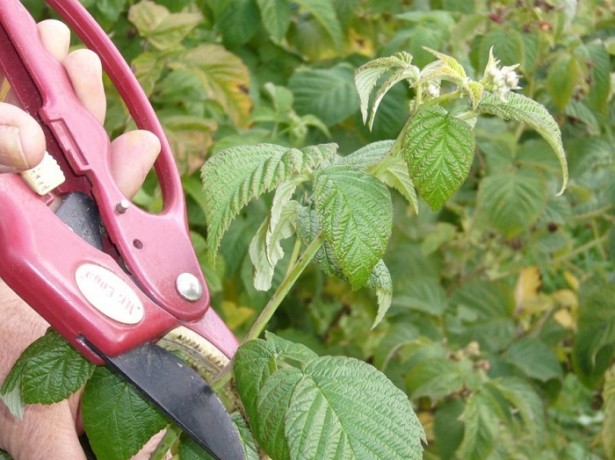
You need to know that the raspberry bush has a powerful root system. Therefore, the plant strives to occupy as much territory as possible, which leads to a decrease in ovaries. As a result, if the correct pruning of raspberries has been carried out, then the uncontrolled spread of roots can be avoided.
Another feature of raspberries is that each of its shoots has a biennial life cycle. This means that after planting the first year, the branch is actively developing and growing. During this time, they are very stretched. In the second year of life, they bear fruit. After fruiting is completed, the shoots simply die off.
If you do not cut out biennial branches, then the bush will turn out to be very thickened and will begin to remotely resemble currants. At the same time, dry wood will prevent the formation of healthy and strong young growth. It also creates very good conditions for the appearance of insect pests on the bush or the development of pathogenic microflora (fungi, viruses, bacteria). All this, ultimately, adversely affects the yield: the berries are crushed over time. In the future, fruiting may cease altogether. And you will have to run to the store for new bushes.
In addition to increasing yields, when pruning, all diseased and old shoots are removed. It is believed that after carrying out this procedure, approximately 8-12 shoots should remain on 1 meter of the site. This is considered the optimal number. In this case, the bushes receive good lighting, which will positively affect fruiting next year. Be sure, after pruning, all cut shoots should be removed from the site and burned. 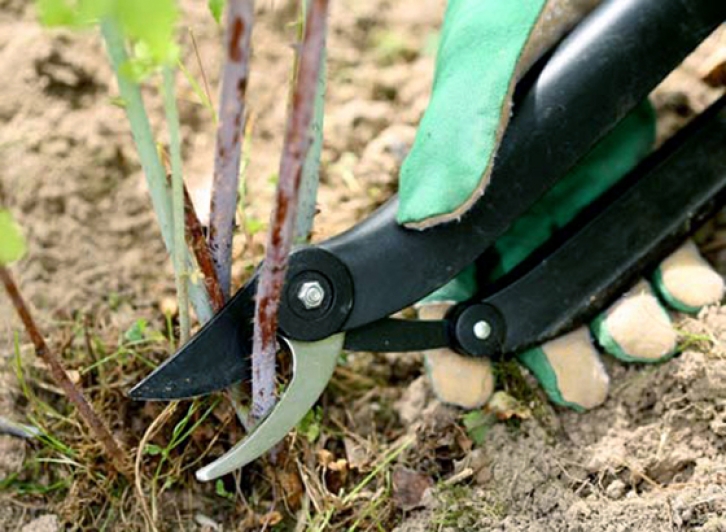
Also pruning can be carried out for the purpose of reproduction. The cut young shoot, after preliminary preparation, is ready for transplantation. With pruning, you can adjust the ripening time of the berries. There is a special technique for this (double trimming). We will talk about it below.
To understand how to cut raspberries correctly, you need to know one rule - do everything clearly and on time. Pruning is a whole range of measures aimed primarily at increasing productivity, and only then at creating optimal conditions for the bush. Experienced gardeners under this procedure understand the following manipulations:
- cutting dead shoots;
- stump of trunks;
- cutting frail, deformed and damaged branches;
- shortening of shoots;
- removal of root shoots;
- bending branches to the ground or tying them.
Moreover, each stage described above should be carried out at its own time. Usually, part of the action is carried out in the fall, after harvesting, and the other part in the spring as a preparation of the bush for the growing season. 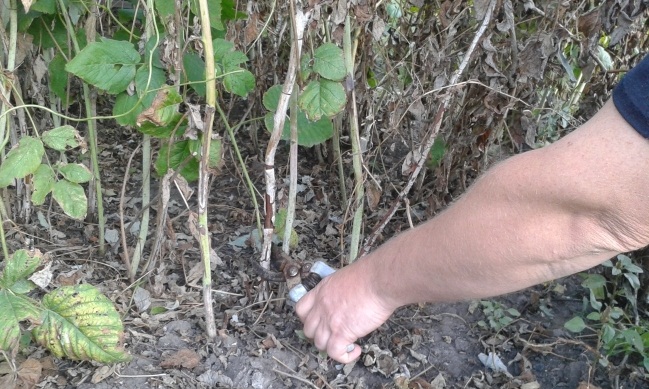
As you can see, it is better to cut raspberries. Otherwise, the bush will inevitably lose its ability to bear fruit.
Video "Effective ways to trim raspberries in the autumn"
To understand how to properly prune raspberries, you need to know and follow the advice given by experienced gardeners. The implementation of such recommendations will allow you to achieve a high-quality and tasty harvest that will ripen throughout the summer.
To do this, gardeners give the following tips on how to prune raspberries correctly:
- pruning raspberries should be at different heights. For this, it is necessary to divide all the bushes into three groups. The first group should be cut in the spring by 10-15 cm, the second - by half the height, and the third - leave only 15-20 cm. As a result, the fruits will ripen in the sequence in which the bushes were cut.
- use the double cut method. This procedure should be carried out in the summer. Double pruning of raspberries is carried out for bushes with a height of about 1-1.2 m. First, the shoots should be shortened from above by 5-7 cm. This will allow nutrients to flow more actively into the lateral buds. As a result, 4-8 strong shoots with a length of 50 cm will form by autumn. They need to be bent to the ground so that they overwinter under the snow. In the spring, the cut bush, namely the long side shoots, is cut by about 10-15 cm. This guarantees a high yield.
In addition, it is important to know that the trimming deadlines must be observed. Cutting branches into more late dates, you risk that they will freeze and die.
Please note that these tips apply to all varieties of raspberries. Therefore, in this case, the question “is it possible to cut raspberries of this variety” will be irrelevant.
The only thing to consider before pruning is whether a particular variety is fruit-bearing once during the growing season. Indeed, in addition to ordinary varieties, there are also remontant plants. The latter have their own specifics for this procedure. 
To get a good harvest, it is necessary not only to properly cut the raspberry shoots, but also to carry out all agrotechnical measures. It is especially important to follow the rules of watering and fertilizing. These procedures are necessary in order for the raspberry to grow into a good, strong and fruitful bush. All this should be known to every gardener who intends on his personal plot.
Pruning single-bearing varieties
Ordinary raspberry varieties, which do not belong to remontant species, bear fruit once during the growing season. 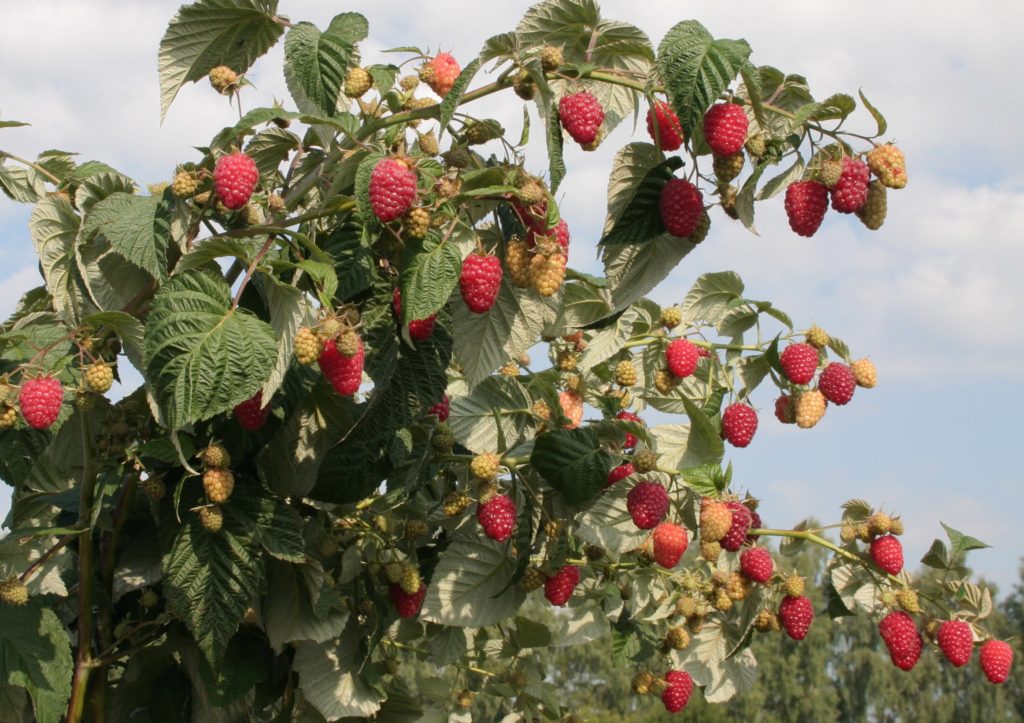
For such bushes, the pruning process is carried out according to the following scheme:
- in the autumn, after harvesting, it is necessary to remove the shoots that have already borne fruit;
- then cut off all diseased, dried and damaged branches. This procedure is called sanitization;
- then you can start thinning out one-year-old shoots;
- with the advent of spring, preparing the bush for fruiting involves shortening the tops of the branches.
As you can see, the procedure itself is very simple and does not require much time. Remember that all cut branches must be burned without fail away from plantings. This is done in order to protect plants from possible diseases. Even if the cut shoot has a healthy appearance, this does not mean that there is no pathogenic microflora inside it. Many microorganisms are able to hibernate in cut branches and wake up with the advent of spring. For this reason, all green mass, as well as branches from pruning, must be burned. 
This technology is not suitable for varieties that can produce several crop waves in one growing season.
Pruning remontant varieties
Remontant varieties of raspberries differ from the usual ones in that they are very productive. They bear fruit already in the first year of life. These varieties appeared in our country relatively recently and every year their popularity is increasing. Therefore, it is important to know how to prune such plants.
Remontant bushes are able to quickly produce a crop. This is facilitated by the fact that their replacement shoots have upper buds. Therefore, with the partial death of the branches for the next year, a somewhat reduced, but, nevertheless, abundant fruiting is observed. It is this moment that must be taken into account when carrying out the procedure for pruning dried shoots. 
In the first two years after planting, the care of such plants will not differ from ordinary varieties:
- loosening;
- watering;
- fertilization.
However, in the second year here you already need to be on the lookout. Because of the peculiarity, you need to know what to do and how to prune so as not to reduce the yield of the bush. In such a situation, if something is done wrong, then the bush may no longer grow. To prevent this, a special was developed. It is implemented as follows:
- after the first fruiting, a situation is observed when part of the shoots dies off. Then they should be cut off;
- it is necessary to cut off the entire above-ground part of the shoots;
- the rest of the branches will bear fruit next year;
- after that, all shoots must be burned;
- then it should be loosened garden plot. This should be done at a shallow depth;
- after loosening the soil is well watered.
pruning remontant varieties should be carried out in the fall, when the last crop was harvested from the bushes. After carrying out this procedure, all annual shoots will grow healthy and strong. This is due to the fact that with maximum pruning, the plant will be securely covered with snow. And this guarantees a quick recovery of the kidneys and shoots. Also, pests and pathogenic microflora will have nowhere to hide for the winter, which is another plus for the future growing season.
In order for the pruning carried out in the fall to have a more positive effect, in the spring the cut remontant raspberries should be cleared of snow and then covered with a black film. Such conditions will allow the growing season to start about two weeks ahead of schedule.
It is worth noting that the harvest of the second year will be slightly different from the first: the berries are somewhat smaller, and the fruiting is less plentiful. However, even in this case, the harvest of the second year may, in terms of its quality and quantitative characteristics, different from the usual varieties.
After the entire crop was harvested in the second year, it is necessary to cut off all the shoots without exception at the root. After that, the soil should be well loosened and watered. Typically, gardeners carry out such actions in our country at the end of October or at the beginning of November. When choosing dates, you need to focus on weather conditions, which should be more or less favorable. For the southern regions, the timing of pruning is postponed by 2-3 weeks, which is associated with a milder and warmer climate.
The next year (already the third in a row), a properly carried out pruning technology will allow you to get healthy, strong and strong young branches that will quickly stretch to the desired height. At the same time, during the winter period, the bush will not freeze and will be able to have a good rest, having accumulated strength for a new abundant fruiting. 
As you can see, pruning remontant varieties is not very different from a similar technology for ordinary plants that bear fruit once a season. Despite the apparent simplicity, this element of care is very demanding on the exact and strict observance of all the rules and advice.
Video "Pruning repair raspberries"
From the video you will learn how to properly cut remontant raspberries.
In raspberries, the harvest of berries is formed only on last year's shoots. Fruiting shoots die off and must be removed. But when, at what time is it better to do this and how to cut raspberries correctly? These questions are often asked by newbies. This article will help you to carry out the correct pruning of raspberries in order to get a good harvest of wonderful and healing berries next season.
When to prune raspberries?
Pruned fruited shoots at the end of summer. They are cut to the very root, leaving no stumps that can become a breeding ground for putrefactive bacteria and viruses of various diseases. At the same time, you can remove diseased and weak branches. The optimal amount for good development strong fruit-bearing raspberry bush 5-6 pieces or 8-12 shoots per 1 m². So each escape will have enough light, heat and space. All pruned shoots are taken out of the raspberry bush and burned.
In early spring, experienced gardeners recommend cutting off the tops (up to the first bud) on last year's shoots, which are expected to harvest. At the same time, all nutrients enter the kidneys, the growth of raspberry shoots slows down, which means that the bush will retain strength for a large harvest.
Pruning raspberries to increase yield

Pruning can regulate the ripening period of raspberries. Throughout the summer, raspberry pruning is carried out at different heights. If you want to extend the harvest time of raspberries, use the following tips:
- Divide the raspberry into three segments.
- Raspberries from the first segment, cut off the tops in early spring by 10-15 cm.
- Raspberries of the second segment are cut to half the height of the shoots
- Raspberry shoots from the third segment are cut heavily, leaving only 15-20 heights.
Raspberries cut in this way will ripen gradually, first the bushes of the first part, then the berries will sing in the second segment, and at the end of the season, enjoy the raspberries of the third section.
There is another way to increase the yield that experienced gardeners use, this is raspberry double pruning method . It is not complicated, but it requires increased attention and the implementation of all agrotechnical measures when growing raspberries.

- At the beginning of summer, raspberry shoots, which have grown to 1-1.2 meters, cut off the tops by 5-7 cm.
- Nutrients begin to flow to the upper lateral buds and stimulate the growth of 4-8 young shoots. By the end of summer, they grow up to 50 cm.
- In autumn, these shoots are bent to the ground and covered from frost (with snow or covering material)
- In early spring, young lateral shoots are shortened by 10-15 cm. New fruit-bearing branches grow again from the upper lateral buds.
Thus, the raspberry yield is almost doubled. But this method is used only under the condition of careful care for raspberries, timely watering and top dressing.
Pruning raspberries in autumn
Pruning methods depend on the type of raspberry. Pruning once fruiting raspberries is carried out in the following sequence:
- In the autumn, all fruiting shoots are removed under the root.
- Remove all diseased, dry and weak shoots.
- On one bush, 5-6 of the strongest young shoots are left.
- In early spring, the tops of overwintered shoots are shortened to the first bud.
Pruning remontant raspberries in autumn

pruning remontant raspberry slightly radically different from pruning the varieties we are used to. Remontant raspberries produce twice a year. It must be carefully looked after: watered, loosened the soil and fed.
After the first harvest, some of the shoots die off, they must be cut out at the root. The remaining shoots of remontant raspberries give a second crop. It is slightly weaker than the first, but no less tasty and fragrant.
After harvesting the second crop, in late autumn, just before frost, all shoots of remontant raspberries are cut at the root. The cut parts of plants are burned. The site is cleaned, loosened shallowly and watered abundantly.
Thanks to such a cardinal pruning of remontant raspberries in the fall, new strong and healthy shoots will grow in the spring. The bush will not freeze, it will rest well. Due to the absence of the aerial part, pests will not hibernate on it. So, the harvest will be generous.
ARTICLES
Perhaps there are no such garden plots where at least a few raspberry bushes did not grow. Everyone knows about its useful qualities. Both kids and adults love her. But how to care for her, when to cut raspberries, fertilize, not everyone knows. Of course, this plant needs attention. This work is not so difficult, even a person far from gardening can do it. Raspberries are known to be perennial shrubs. However, the life span of each individual shoot is 2 years. The first year the stem grows, gaining strength. But in the second year it branches, yields and dies. From the root offspring, new stems grow to continue the life of the bush. In order not to break this order and get a bountiful harvest of the highest quality, annual pruning of plants is required. When should you prune raspberries?
1st pruning option - autumn
It is in September, after the harvest of berries, that the base of the new crop is laid. produced in autumn to prepare the plant for winter. Fruiting branches should be removed. We start cutting with them. It is easy to distinguish them by their harder brown stem and ramifications. When the time has come to cut the raspberries, you should not postpone this event, since it is impossible to reanimate the old branches, they will still dry out and fall off. 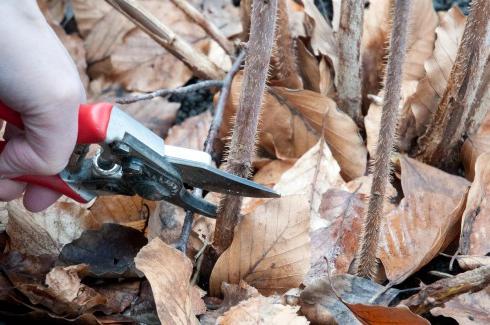 But in this case, young stems are endangered. Cuts should be made closer to the base. It is also necessary to remove diseased, broken and weak shoots growing in the middle. will allow you to get rid of various infections, pest larvae and will enable new strong branches to develop more actively. For each meter, it is enough to leave 10-15 shoots. All old cut branches should be removed from the site and burned immediately to prevent the spread of infection.
But in this case, young stems are endangered. Cuts should be made closer to the base. It is also necessary to remove diseased, broken and weak shoots growing in the middle. will allow you to get rid of various infections, pest larvae and will enable new strong branches to develop more actively. For each meter, it is enough to leave 10-15 shoots. All old cut branches should be removed from the site and burned immediately to prevent the spread of infection.
wintering raspberries
The long remaining branches can be cut to 10-15 cm. Then it is advisable to tie the shoots to a support. If a snowless winter is expected, barriers are placed in the garden, shields to hold back snow. The resulting snowdrifts will protect the bushes from freezing. If the winter is frosty, it is recommended to pin the shoots to the ground with metal hooks. Then the snow will cover them and save them from freezing. Before wintering, all leaves are removed from the bush. This is easy to do by putting on a mitten on your hand, and then swiping the stem from the bottom up. The leaves will fall off, the kidneys will not be affected. The left leaves rot, damage the buds. Only after removal, they bend down no higher than 50 cm from the ground and fix it.
2nd trim option
When to prune raspberries, if not in autumn? It is possible to leave work with young shoots in the spring (after the snow melts). In plants, they only cut the tops, tie them into sheaves and bend them to the ground. The advantage of this option is better snow retention and more accurate selection of strong branches.
With any pruning option in the fall, the soil is loosened, fertilized with manure, peat or compost. All these works should be done annually.
These variants refer to common raspberry varieties. However, there are remontant varieties, they have branching of the stem and fruiting occurs in the first year, continues into the next. When is the best time to prune remontant raspberries? There are various trimming methods available here. You can remove everything that has grown during the season. New shoots next year will give a new crop. 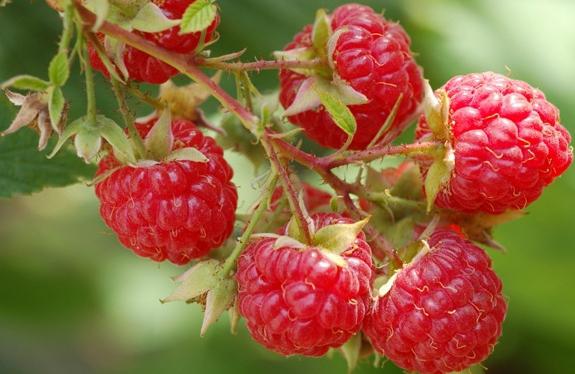 But this method does not allow using the full potential of fruiting raspberries. Not all berries will have time to ripen. Therefore, most often the bushes of this variety are cut like ordinary ones. Pruning may well be done in the spring. Each gardener decides when to prune raspberries, at his own discretion, using not only the recommendations of agronomists, but also his personal experience.
But this method does not allow using the full potential of fruiting raspberries. Not all berries will have time to ripen. Therefore, most often the bushes of this variety are cut like ordinary ones. Pruning may well be done in the spring. Each gardener decides when to prune raspberries, at his own discretion, using not only the recommendations of agronomists, but also his personal experience.
Sometimes it seems that raspberries grow on their own and give a good harvest, it is only necessary to water and feed them occasionally. However, in reality, yields can become significantly higher if additional care is applied, pruning is carried out in spring, summer and autumn. Biologically, generative buds, and, accordingly, fruits, are laid on two-year growths of raspberries, with the exception of remontant raspberries - their crop is formed on annual growths. However, even after her vegetation for 2 years, the shoots lose their former strength and are subject to cutting in order to allow young shoots that come from the rhizome to grow.
Do I need to cut raspberries
Pruning on raspberries is highly desirable. The procedure activates the growth of young shoots, on which generative buds will be laid. Removing old shoots, which may have diseases and pests, heals the plantation so that it does not need preventive treatments.
If you ignore pruning, one bush will give dozens of new shoots, which will thicken it greatly. This will reduce the overall yield, the berries (especially for remontant raspberries) will become insipid, less sweet. In thickened bushes, pests multiply more actively and diseases develop faster, and shoots freeze in winter.
Spring raspberry pruning
Spring pruning will slow down the growth of the bush and literally force the raspberries to direct nutrition to the berries. In the same period, it is necessary to cut frozen and broken shoots to healthy tissue. They should be cut 12-14 cm to the strongest bud.
When to prune raspberries in spring
Proceed to spring pruning raspberries are usually in March or April, it is advisable to finish it before the start of sap flow.
How to prune raspberries in spring
To summer varieties regular raspberry berries were presented for a long period, shoots can be pruned at different heights, up to 12-16 cm from the soil surface. The shorter the shoot is cut, the later it will bear fruit. Longer shoots will bear fruit earlier, shorter ones will follow, and so on.
As soon as the young shoots begin to grow actively, it is necessary to cut out all weak shoots at the level of the soil. You can even dig them a little, remove them just below the surface of the soil and return the soil back. From the shoots that have grown by 20-35 cm, you need to choose the strongest and most well-developed, the rest can be removed. Pay attention to the distance between them - it should be at least 18-20 cm, you should not leave shoots that grow close to each other. As a result, leave 15-20 strong, young shoots per 1 m², no more.

Summer raspberry pruning
Pruning raspberries in the summer is aimed at accelerating the formation of the aerial part of young plants, at increasing the yield of bushes that have entered fruiting. Pruning raspberries during the dormant period will allow the next season after laying the raspberries to get a yield three times higher than on raspberries, where summer pruning was not used. Raspberry plants that have undergone summer pruning begin to bear fruit faster and their yields are usually higher.
When to prune raspberries in summer
It is desirable to carry out pruning in the summer when the crop has already been harvested. During this period, the above-ground mass is actively growing, and pruning will stimulate the development of roots. The stronger the root system develops, the more shoots and berries it will give.
How to prune raspberries in summer
In summer varieties, shoots that have finished bearing fruit must be cut. Cut off exactly to the base of the soil, do not leave stumps, otherwise they will become a breeding ground for infection if pests and diseases settle there. Similar pruning can be done in autumn, but it is in summer that the maximum nutrition will be directed to young shoots that will lay generative buds.
In general, you should know that the raspberry stalk that has fruited usually dries out by autumn, however, new basal shoots grow from the buds that are located on the root system in the summer, on which there will be a harvest next year. I noticed that in the very first year after planting there are very few such basal shoots on plants, usually no more than two, but sometimes there is only one. It is clear that with so many shoots there will be no good yield next year. To make the bushes bear fruit the very next year after planting, I advise you to shorten the aerial part, leaving a short growth of 18-22 cm. fruit twigs on which the crop will form.
To increase the yield, all basal shoots that have appeared, as soon as they reach a height of 65-75 cm, shorten by about the length of a pencil, it is usually appropriate to do this in early to mid-June. After such pruning, the shoots will begin to branch and each will form 5-6 additional lateral growths.
In addition, the summer image is appropriate on heavily sparse bushes, after which the shoots will begin to branch and fill the free space. The total growth will increase many times due to active lateral branching, respectively, the yields will also increase.
The main thing when pruning is to use a clean tool and wipe the blade with a cloth soaked in alcohol when moving from one plant to another.
Double pruning raspberries in summer
Double pruning means that in addition to removing the fruiting shoots, pruning should also be carried out in the summer, aimed at limiting the growth of the raspberry plantation in breadth. To do this, all extra shoots (if there are more than 20 per 1 m²) must be cut out about once every 10 days.

Autumn pruning raspberries
At autumn pruning raspberries first remove the fruiting shoots if they did not have time to do this in the summer. Next, you need to cut out all the shoots that are weak, withered, diseased or damaged by pests. This is sanitary pruning. Such shoots must be cut off at the surface of the soil, and then burned. In the autumn period, it is also necessary to continue the removal of green shoots - it will not have time to mature.
Toward the end of autumn, annual shoots are removed from remontant raspberries, which by that time should already have finished bearing fruit. If there is no time to cut these shoots in the fall, then it is quite possible to prune in the spring, the main thing is to have time before the beginning of March.
Double pruning of raspberries according to Sobolev
A rather interesting and yielding positive result, the method of pruning raspberries was invented back in Soviet time A.G. Sobolev. The meaning of the method lies in correctly defined pruning dates and preventing thickening of the raspberry plantation. Pruning according to Sobolev allows you to significantly extend the fruiting period of standard raspberry varieties, bringing them closer to remontant varieties, increases the number of generative buds on the shoots, and increases the yield from July to September.
Autumn pruning by this method nothing different from the standard. Do not forget about sanitary autumn pruning.

First raspberry pruning
According to Sobolev, the very first pruning of raspberries, when the tops of annuals are removed, is done when the plants reach 75-95 cm. Usually, shoots grow to such a height at the end of May or the first half of June (although a lot depends on the region, soil, season, etc.). In this case, the shoot must be shortened by 12-14 cm, after which lateral growths will begin to actively form.
At the same time, the buds located in the axils of raspberry leaf blades are also activated, and towards the end of summer, shoots up to 50 cm long will form in their place. It is on these shoots that the crop will ripen next year. It is very important to make the first pruning according to this method at the optimum time, otherwise the shoots will not have time to become woody and simply freeze in the winter.
Second raspberry pruning
The second pruning should also be done in the spring, but for the next season. As soon as the shoots are covered with leaf blades, it is necessary to cut off the tops 12-14 cm long from all lateral growths. This pruning activates the development of a large number of buds located in the axils, and by the fruiting period the shoots will form a large number of short growths, each of which will have fruits.
